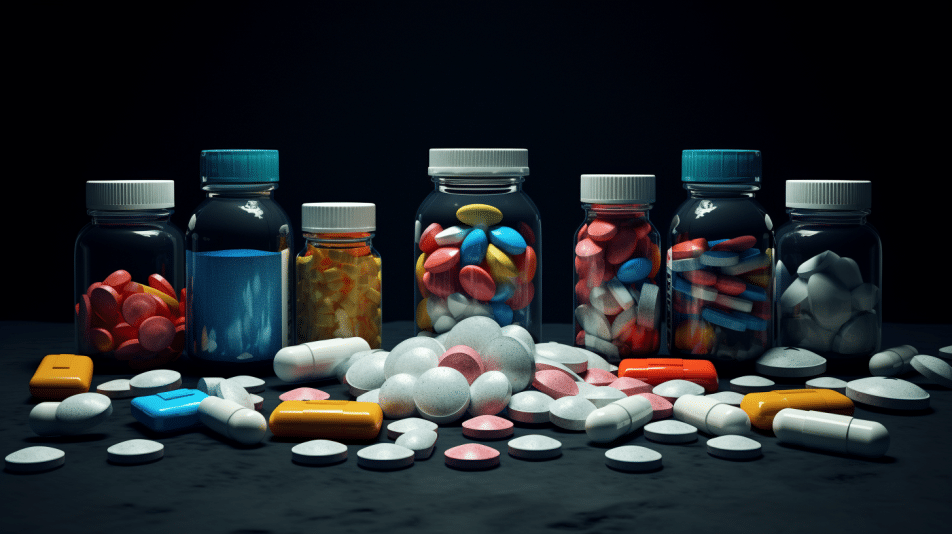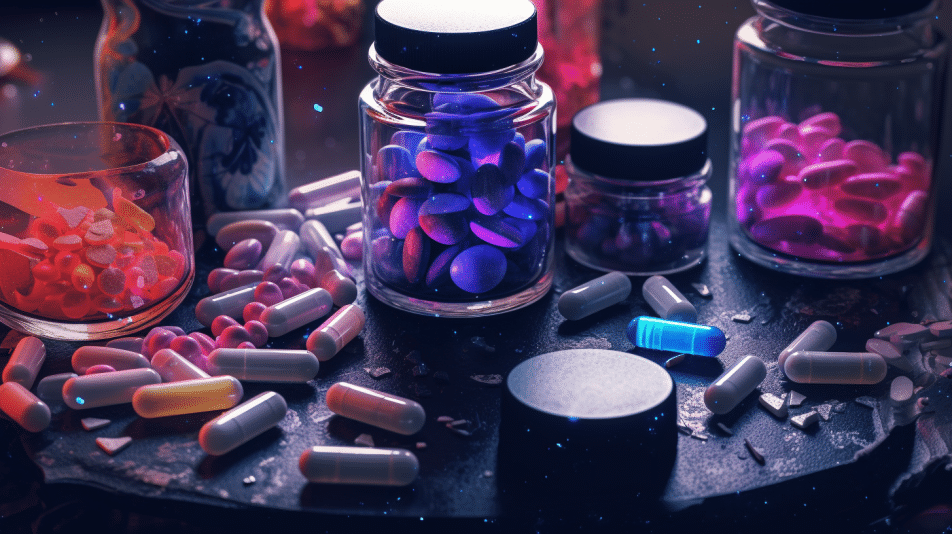Recreational drug use is constantly evolving, with new substances emerging and old drugs being used in new ways.
This can pose risks, especially for the developing adolescent brain.
Key Facts:
- Use of designer opioids like fentanyl is skyrocketing, causing a rise in overdoses. They are extremely potent and risky.
- Novel versions of stimulant drugs like methamphetamine are being produced, with unknown side effects.
- Marijuana potency has increased dramatically, leading to more unintended exposures in kids.
- Newly popular prescription sedatives can cause dangerous interactions and overdoses.
Source: Emerg Med Clin North Am. 2021
The opioid epidemic gets deadlier with new synthetics
Opioid addiction has exploded into a full-blown epidemic in recent years.
Both prescription opioid painkillers like oxycodone as well as illicit opioids like heroin have become widely misused.
Over 67,000 Americans died from opioid overdoses in 2018 alone.
Now, the crisis is worsening due to the rise of extremely potent synthetic opioids.
The most common of these is fentanyl, which is around 50 times stronger than heroin.
It is sometimes mixed with other drugs like heroin or cocaine, often without the user’s knowledge.
This makes the risk of overdose extremely high. Fentanyl overdoses have skyrocketed, driving surges in opioid deaths.
Fentanyl itself is sometimes prescribed for pain, but much of what’s on the streets is illegally manufactured overseas and smuggled into the U.S.
There are also many fentanyl analogs or derivatives, altered versions of the molecule that produce similar effects.
These “designer” synthetic opioids like carfentanil can be thousands of times stronger than morphine.
Like other opioids, synthetics produce euphoria and pain relief by activating opioid receptors in the brain.
But stronger effects also come with greater risks. Even small doses can dangerously slow breathing.
Overdoses require quick administration of the overdose reversal medication naloxone.
Adolescents may be particularly vulnerable to synthetic opioids.
Their brains are still developing impulse control and decision-making circuits.
They may underestimate the extreme risks posed by even experimenting with these drugs.
Parents should be alert to potential warning signs like pinned pupils, sleepiness, or slowed breathing.
Seeking immediate medical help for suspected overdoses can save lives.
Old stimulants, new versions: Risks of novel phenethylamines
Amphetamines like methamphetamine produce a surge of dopamine in the brain’s reward system, causing euphoria and energy along with addiction risk.

Now, underground chemists are synthesizing novel stimulants by modifying the amphetamine molecule.
One class is the phenethylamines like MDMA (ecstasy). Adding certain atoms to the molecular structure makes them more hallucinogenic.
Some variants called NBOMe compounds are extremely potent and unpredictable. Overdoses can lead to seizures, organ failure, or death.
Another issue is that standard urine drug tests may not detect some of these new phenethylamines.
This gives adolescents a false sense they can evade consequences of use. Unknown side effects also raise concerns.
These stimulants over-activate brain circuits involving dopamine, norepinephrine, and serotonin.
This can damage neurons and may impair development of proper brain connectivity.
Chronic abuse can cause anxiety, depression, and memory problems lasting long after quitting.
Parents should watch for symptoms like agitation, sweating, muscle tension, or confusion which may signal stimulant intoxication.
Getting ahead of emerging drug threats requires open communication about risks and harms before tragic consequences occur.
High-potency THC poses growing risks to kids
Marijuana potency has soared in recent decades.
Selected cultivation has boosted levels of its main psychoactive component THC from around 3-5% in the 1980s to 15-20% today, with some products exceeding 30%.
This increases risks from accidental ingestion.
Edible marijuana products often have very high THC doses.
They also take longer to absorb compared to smoking, allowing easy overconsumption.
Between 2005 and 2011, childhood marijuana exposures nearly tripled in states that had legalized medical marijuana before 2000.
Exposures can cause significant toxicity including drowsiness, difficulty breathing, and coma requiring intensive care.
In teens and adults, regular marijuana use activates cannabinoid receptors in brain regions involved with memory, cognition, and emotional processing.
This impairs thinking, learning, and mental health. Evidence suggests it may also derail crucial brain development during adolescence.
Some children require ICU admission and mechanical ventilation for severe intoxication.
Parents should store marijuana products safely out of children’s reach and sight, regardless of legal status.
With potency rising, smaller amounts can trigger toxic effects. Starting conversations early about marijuana risks vs benefits encourages healthier choices.
Prescription downers emerge as drugs of abuse
Beyond classic benzodiazepines like Xanax and Valium, several prescription sedatives are increasing as drugs of abuse.
These “downers” activate GABA receptors, reducing neuronal activity and causing relaxation and sleepiness.
First responders are encountering more cases of recreational use leading to oversedation, dangerous drug interactions, and even death.
One is Soma (carisoprodol), a muscle relaxant. Its metabolite blocks GABA breakdown, magnifying effects of opioids or benzodiazepines if combined.
This synergistic action can cause respiratory depression. Another is klonopin (clonazepam), with potency similar to Xanax.
In overdose it can induce coma, amnesia, and seizure-like muscle twitches.
Some newer arrivals are sleep medications like zolpidem (Ambien).
It can cause bizarre sleepwalking behaviors and even hallucinations at high doses.
Phenibut, marketed for anxiety, stress and sleep, has seen surging abuse. Withdrawal after heavy use can be life-threatening.
The trend cuts across age groups but adolescents may be most vulnerable.
The still-developing teen brain struggles with self-control and assessing risks.
Parents can help protect kids by talking about the dangers of misusing medicines, properly securing medications at home, and recognizing possible signs of substance use issues.
Takeaway on novel recreational drugs…
Vigilance is key to getting ahead of the endlessly shifting recreational drug landscape.
Tracking emerging threats, understanding their brain impacts, and having open conversations about risks are crucial to promote healthy choices and prevent tragedy.
The developing adolescent brain is too precious to put at risk from the harms of substance abuse.
Making smart choices now fosters a lifetime of brain health.
References
- Study: New Designer Drugs
- Authors: Levine & Lovecchio (2021)







